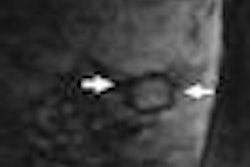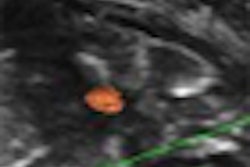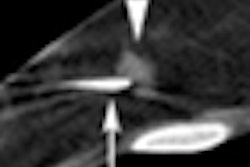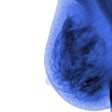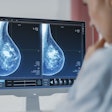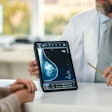SAN FRANCISCO - Is it possible that some breast cancers "spontaneously regress" and would otherwise become harmless if they weren't detected on screening mammography? The controversial theory was the topic of a heated debate at last week's American Society of Clinical Oncology's (ASCO) Breast Cancer Symposium.
The spontaneous regression theory was proposed by a study published in the November 2008 issue of Archives of Internal Medicine by Dr. Per-Henrik Zahl of the Norwegian Institute of Public Health in Oslo. In the study, Zahl held that many malignant lesions found on screening mammography would simply regress and pose no threat to the patient if left alone. He claimed that the findings indicate that modern mammography screening has an overdiagnosis rate of 50%.
The paper's publication sparked consternation from various mammography experts. Many have criticized the study's findings, noting that no other research has found evidence of spontaneous regression of breast tumors.
Zahl revisited the issue at ASCO's Breast Cancer Symposium, presenting data from two studies, one conducted in Norway and the other in Sweden. The Norwegian study included a control group of 109,784 women and a study group of 119,472 who were followed for six years. The study cohort was screened every two years in the first four years; in years five and six, the two groups were screened simultaneously.
After four years, the difference between the two groups' cumulative rates of breast cancer was 458 per 100,000 women; after six years, the difference was 345 more breast cancers per 100,000 in the triple-screened group. Zahl found that 75% (345 of 458) of all extra breast cancers discovered in the first two screening rounds had "regressed" before screening in years five and six.
The Swedish study's design was similar to the Norwegian study, although the control group for the Swedish data included 317,404 women and the study group included 328,927 women. Zahl and colleagues followed them for six years as well. They found more breast cancers in the triple-screened cohorts for all age groups (40 to 44, 45 to 49, 50 to 54, 55 to 59, 60 to 64, and 65 to 69).
"Mammography screening detects a lot of subclinical cancers that will never become clinical," Zahl told symposium attendees. "But it's considered unethical not to remove [the lesion] if it has been diagnosed."
Zahl's presentation at the ASCO symposium followed that of Dr. Blake Cady of Cambridge Hospital Breast Center in Cambridge, MA, which came to the opposite conclusion: Routine mammograms are essential to prevent deaths from breast cancer, as nearly three-quarters of deaths occur in women who don't receive regular screening.
Cady and colleagues followed nearly 6,997 women who were diagnosed with invasive breast cancers in Massachusetts from 1990 to 1999. They found that of the 461 deaths from breast cancer in this group, 74.8% occurred in women who did not undergo regular mammographic screening and 25.2% occurred in regularly screened women.
"The most effective method for women to avoid death from breast cancer is to have regular mammographic screening," Cady said.
The two presentations sparked heated questions from symposium attendees, including whether Zahl's findings had changed the screening guidelines in Norway or Sweden.
"If we do accept the premise that half of diagnosed cancers will never develop into fatal disease, do we have a way to determine which ones will be malignant? Are you advocating that we stop screening?" one attendee asked.
Zahl conceded that the findings hadn't led to a change, and he advised further study to determine their clinical impact.
"Our data are not intended to address whether we should do screening or not," Zahl said. "A case-controlled study is necessary to determine which tumors regress and which do not."
Robert Smith, Ph.D., director of cancer screening for the American Cancer Society (ACS) in Atlanta, gave a summary of both presentations. Smith did not accept the 50% overdiagnosis rate Zahl suggested and said there is little supporting evidence for spontaneous regression.
"Overdiagnosis does occur in screening programs, but more on the level of 3% to 9%, rather than 50%," Smith said. "On the other hand, there is unequivocal evidence from prospective, randomized trials that show screening mammography is associated with reduced risk of dying from breast cancer."
Because Zahl's findings are controversial, some attendees wondered why the abstract had been included in the symposium's lineup at all. Program organizers added it for the sake of dialogue, according to Dr. William Symmans, co-chair of the meeting's program committee and professor of pathology at M. D. Anderson Cancer Center at the University of Texas in Houston.
"This is a safe place to engage in dialogue about controversial findings," Symmans said. "Provoking critical thinking is a good thing. I'm not saying this to [sanction] Dr. Zahl's findings and interpretations. But it's a valid question to ask whether there are some patients whose disease, although diagnosable, is unlikely to cause fatality."
By Kate Madden Yee
AuntMinnie.com staff writer
October 12, 2009
Related Reading
Most breast cancer deaths seen in nonscreened women, October 7, 2009
Study traces steady declines in U.S. cancer deaths, August 13, 2009
Living near mammography unit may improve outcomes, August 3, 2009
Study: Cancer death rates drop in U.S., May 28, 2009
Norwegian mammo study claims to find cancer 'spontaneous regression,' November 28, 2009
Copyright © 2009 AuntMinnie.com






